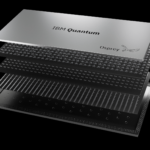Quantum computing steps up supply chain smarts

Quantum computers bring powerful problem-solving skills to the table. And while some folks will enjoy puzzling over the nature of quantum bits (qubits), others will want to jump straight into the practical details. For example, what are the benefits of quantum computing and how do you get access to a machine? The answers, for many, will provide an inspiring read.
Optimization problems, it turns out, are well suited to quantum computers. Reducing materials waste on a production line, scheduling delivery fleets more efficiently, and minimizing risk while maximizing gains across a financial portfolio are just a few practical applications for quantum computers. And quantum computing developer D-Wave has hundreds of other examples listed on its website.
Industrial relevance
The North American firm, which reported a 30% increase in year-on-year Q3 revenue this month, has expanded its commercial customer base by more than a third. Recent additions include steel producer ArcelorMittal, chemicals giant BASF, and consultancy firm Deloitte – taking the number of commercial customers to 63 during the first nine months of fiscal 2022. “It’s about finding areas where quantum computing can contribute to the workflow,” Murray Thom, VP of Product Management at D-Wave, told TechHQ.
Thom references companies such as Volkswagen. The German automaker has used quantum computing to optimize the process of painting car bodies as they travel down the production line. And the firm was able to deliver an 80% reduction in waste by painting more cars in between each switch in paint color. Save-On-Foods, a Canadian supermarket chain with 179 locations across four provinces, has reduced the calculation time for its optimization algorithms from 25 hours to just 2 mins of calculations per week.
READ NEXT

AI digests supply chain risk
Talking through the process, Andrew Donaher – VP of Digital and Analytics at Save-On-Foods – notes that their model includes four million decision variables with multiple interactions. And while you might not immediately pair supermarkets with quantum computers, the relationship is an obvious one given the giant logistical operation that’s required to bring food to customers. What’s more, to turn a profit, firms need to pay attention to decreasing costs and improving performance.
QCaaS
The wide range of practical applications for quantum computers is all well and good, but if machines are expensive to access and difficult to program then providers could struggle to sell the concept. Fortunately, those kinks have been ironed out. “You don’t need to bring a quantum physicist on to your team,” said Thom. Operators such as D-Wave, and others, have made great progress not just in the hardware, but also in making quantum computing infrastructure readily available and straightforward to code. If you can program in Python then you’re all set.
D-Wave’s Leap platform gives users the chance to discover more about the benefits of quantum computing by providing cloud access to the firm’s quantum-classical hybrid solver. And, according to the company, customers can see a 100 to 500 times speed up on commercial applications using the quantum cloud service. Leap includes an SDK, plus a variety of demos, as well as Jupyter notebooks with live code.
Quantum-computing-as-a-service (QCaaS) offerings, which include Amazon Braket, give customers access to a growing range of quantum technologies, including D-Wave’s quantum annealers. The terminology refers to the way that superconducting qubits – built upon silicon wafers leveraging semiconductor manufacturing methods – arrive at their optimization results.
Anneal appeal
Mapping real-world problems into the quantum domain involves representing features with quantum bits. And what makes the system so powerful is that the electromagnetic properties of those bits can interact. For example, the relationship between the various system elements can be represented by the interaction strength between the qubits. Or, as Pavel Lougovski – Principal Quantum Solutions Architect at Amazon Bracket – explains, you take a mathematical problem and reformulate it as a physics problem.
To arrive at the optimization solution, first the qubits are prepared so that there are no interactions and then ramped up to the interacting scenario. If done slowly (much like in the annealing of a metal), the interaction parameters will arrive at the minimum energy state of the target system. However, keep in mind that ‘slow’ – in terms of quantum computing – refers to just a tiny fraction of a second.
This energy state can be thought of as the ‘best answer’ – for example, to find the optimal partitioning of a renewable energy grid, or solutions to a host of other real-world problems. And because the complexity of the energy landscape scales exponentially with the number of qubits, modern quantum computing hardware is capable of representing systems involving many interacting parameters. “Couplings allow you to take into account all of those interactions,” said Thom.
Helping customers to see the advantages is critical in communicating the benefits of quantum computing. And a great way of doing that is to start exploring the demos that are available on cloud platforms. Then, as the opportunities began to crystalize, customers will be well placed to reach up to larger scale problems.









